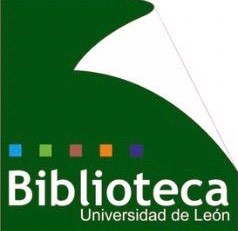Mostrar el registro sencillo del ítem
| dc.contributor | Facultad de Ciencias de la Salud | es_ES |
| dc.contributor.author | Gutiérrez Martínez, Serena | |
| dc.contributor.author | Fernández Martínez, María Nélida | |
| dc.contributor.author | Adánez García, José Manuel | |
| dc.contributor.author | Fernández Fernández, Camino | |
| dc.contributor.author | Pérez Prieto, Beatriz | |
| dc.contributor.author | García Gallego, Ana Belén | |
| dc.contributor.author | Gómez Salgado, Juan | |
| dc.contributor.author | Medina Díaz, María | |
| dc.contributor.author | Fernández García, Daniel | |
| dc.contributor.other | Enfermeria | es_ES |
| dc.date | 2023 | |
| dc.date.accessioned | 2024-03-07T06:52:33Z | |
| dc.date.available | 2024-03-07T06:52:33Z | |
| dc.identifier.citation | Gutiérrez-Martínez, S., Fernández-Martínez, M. N., Adánez-García, J. M., Fernández-Fernández, C., Pérez-Prieto, B., García-Gallego, A., Gómez-Salgado, J., Medina-Díaz, M., & Fernández-García, D. (2024). Applying the Modified Ten-Group Robson Classification in a Spanish Tertiary Hospital. Journal of Clinical Medicine, 13(1). https://doi.org/10.3390/JCM13010252 | es_ES |
| dc.identifier.uri | https://hdl.handle.net/10612/18651 | |
| dc.description.abstract | [EN] Background: Caesarean section is necessary to save the lives of mothers and newborns at times, but it is important to perform it only when it is essential due to all the risks involved. This study aimed to examine the rate of caesarean sections performed at a tertiary hospital using the Robson classification to detect methods for the detection of and/or reduction in these caesarean section rates. Methods: A descriptive, cross-sectional study of a retrospective database was carried out. Results: A total of 10,317 births were assessed. The Robson classification was used to assess these interventions and verify whether the indication for performed caesarean sections was appropriate. In total, 2036 births by caesarean section were performed in the whole sample. The annual caesarean section rate varied between 18.67% and 21.18%. Conclusions: Caesarean sections increased by about 20% in 2021 compared to 2020 even though the trend over the years of study was decreasing. Vaginal delivery after caesarean section is a reasonable and safe option. Caesarean section rates could be improved, mostly in Robson’s Group 2. The Robson classification facilitated progress in the implementation of measures aimed at improving care and adjusting caesarean section rates. | es_ES |
| dc.language | eng | es_ES |
| dc.publisher | MDPI | es_ES |
| dc.rights | Atribución 4.0 Internacional | * |
| dc.rights.uri | http://creativecommons.org/licenses/by/4.0/ | * |
| dc.subject | Enfermería | es_ES |
| dc.subject.other | Gynaecology; | es_ES |
| dc.subject.other | Delivery; | es_ES |
| dc.subject.other | Robson classification; | es_ES |
| dc.subject.other | Caesarean section | es_ES |
| dc.subject.other | Vaginal surgery | es_ES |
| dc.title | Applying the Modified Ten-Group Robson Classification in a Spanish Tertiary Hospital | es_ES |
| dc.type | info:eu-repo/semantics/article | es_ES |
| dc.identifier.doi | 10.3390/JCM13010252 | |
| dc.description.peerreviewed | SI | es_ES |
| dc.rights.accessRights | info:eu-repo/semantics/openAccess | es_ES |
| dc.identifier.essn | 2077-0383 | |
| dc.journal.title | Journal of Clinical Medicine | es_ES |
| dc.volume.number | 13 | es_ES |
| dc.issue.number | 1 | es_ES |
| dc.page.initial | 252 | es_ES |
| dc.type.hasVersion | info:eu-repo/semantics/publishedVersion | es_ES |
| dc.subject.unesco | 3212 Salud Publica | es_ES |
| dc.subject.unesco | 3201.08 Ginecología | es_ES |
Ficheros en el ítem
Este ítem aparece en la(s) siguiente(s) colección(ones)
-
Artículos [5358]








